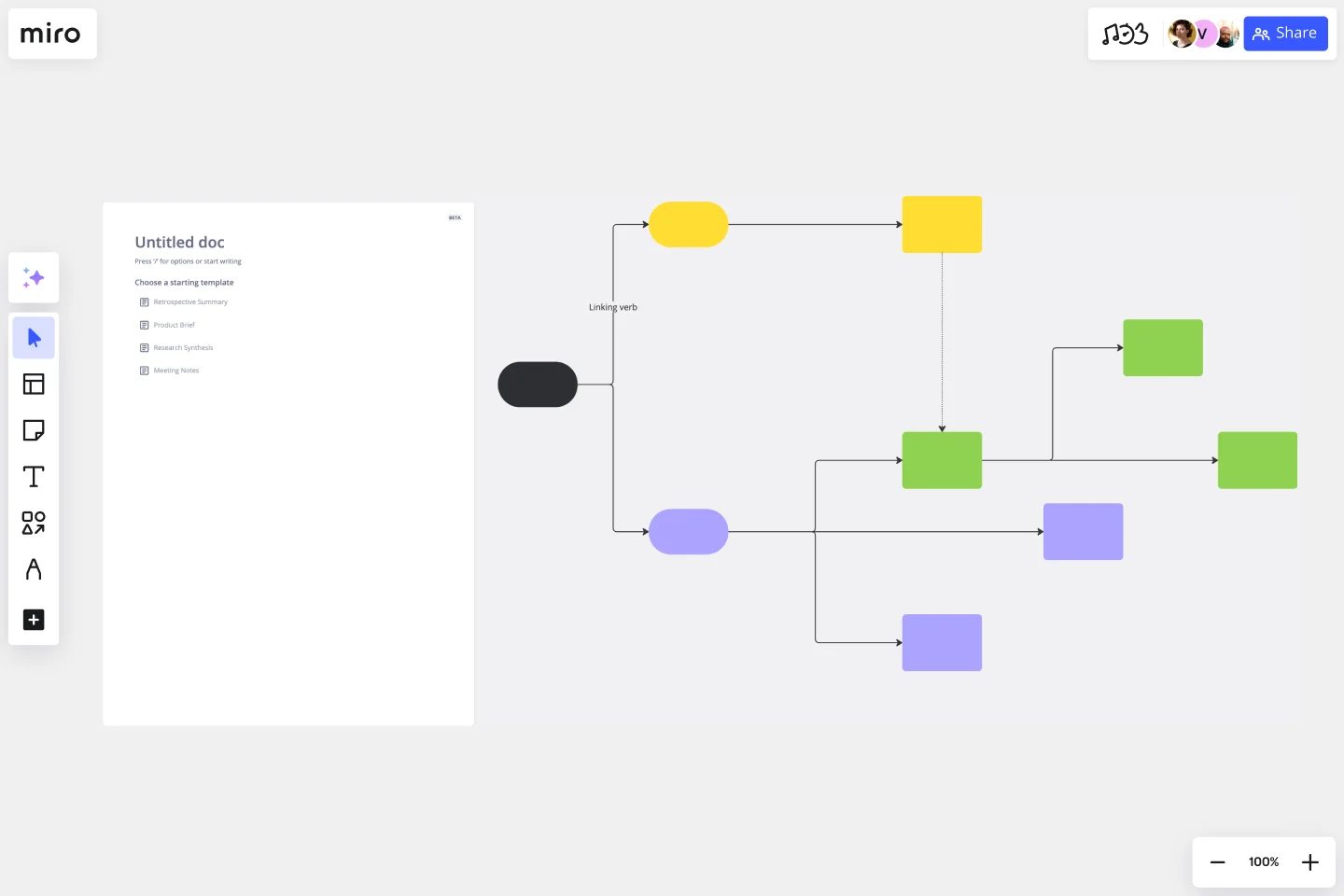All templates
Fishbone Diagram Template

Miro
The AI Innovation Workspace
Miro brings teams and AI together to plan, co-create, and build the next big thing, faster. Miro empowers 100M+ users to flow from early discovery through final delivery on a shared, AI-first canvas. By embedding AI where teamwork happens, Miro breaks down silos, improves alignment, and accelerates innovation. With the canvas as the prompt, Miro’s AI capabilities keep teams in the flow of work, scale shifts in ways of working, and, ultimately, drive organization-wide transformation
Categories
Similar templates
Concept Map Template
11 likes
1.7K uses

Mind Map Template
17 likes
1.2K uses

Visual Table
0 likes
0 uses

Concept Map Template
11 likes
1.7K uses

Mind Map Template
17 likes
1.2K uses

Visual Table
0 likes
0 uses
